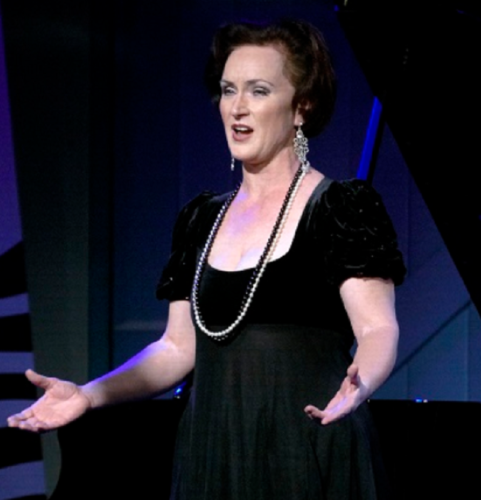
Music / “Australian Song”, at Wesley Music Centre, August 23. Reviewed by TONY MAGEE.
IN compiling this fascinating and diverse program of Australian song, soprano Sarahlouise Owens and pianist Phillipa Candy spent months researching archives, discovering two forgotten female composers whose musical output included pieces of substance and quality that somehow slipped through the net.
Owens paid tribute to Candy’s enormous contribution to this recital. Alas due to ill health, she was unable to accompany on the day and the amazing and extremely talented Natalia Tkachenko took her place, with six days notice, providing piano accompaniments of sensitivity and beauty throughout the performance.
The highlight of the concert was the premiere of the song cycle “Truth and Beauty” by Canberra composer Michael Dooley, using three poems by John Keats as his texts and later in the program, finishing with Keat’s most famous “Ode to a Nightingale”.
Dooley stands tall as a gifted modern composer, having established a composing style that is clearly unique and which he can call his own.
He has a special gift for melody, supported by beautiful, flowing, almost cloud-like cushioning support from the piano.
Owens sang the Dooley cycle with lyrical phrasing, beautiful pitch, diction and dynamics, which captivated the socially distanced capacity audience of just 34.
I have it on good authority, that this program will be repeated as a dual session before the year is out.
“Two Hebrew Songs” by Linda Phillips (1899-2002) and selections from “Collected Songs Vol. 1” by Phyllis Batchelor (1915-1999) followed, both female Australian composers who have been unjustifiably ignored. Phillips’ “Ash Trees” and “The Golden Bird” showcased her bold and dynamic composing style, repertoire that was once sung by Joan Sutherland in her youth and then largely forgotten, until this recital brought them back to life.
Batchelor’s “The Wind” demanded extreme vocal power and emotion from Owens who delivered the goods with aplomb and assurance, aided by Tkachenko’s equally demanding and powerful accompaniments.
Carl Vine’s “Love Me Sweet” presented a gentle and romantic contrast, using the musical technique known as “tierce de picardi”, where the key centre changes from minor to major at cadence points.
Selections from Horace Keats’ “Brennan Songs” was the only disappointment for me during this recital. His composing style is unoriginal, predictable and repetitive. The performers did the best they could with it, but I think the program would have been better off with this section omitted.
It was certainly very refreshing to hear new Australian works premiered alongside revivals of neglected ones, all presented by these two talented artists with panache and style, in yet another of the first, tiny steps taken back into the world of live performance.
Who can be trusted?
In a world of spin and confusion, there’s never been a more important time to support independent journalism in Canberra.
If you trust our work online and want to enforce the power of independent voices, I invite you to make a small contribution.
Every dollar of support is invested back into our journalism to help keep citynews.com.au strong and free.
Thank you,
Ian Meikle, editor





![For graphic designer Tracy Hall, street art is like any artwork, her canvas has been swapped out for fences and plywood, her medium changing from watercolours to spray paint.
A Canberra resident for 13 years, Tracy has been a street and mural artist for the past five.
Her first exploration into grand-scale painting was at the Point Hut toilets in Banks five years ago. “They had just finished doing up the playground area for all the little kids and the words [of graffiti] that were coming up weren’t family friendly,” she says.
“So I ended up drawing this design and I got approval for the artwork.”
Many of Tracy’s time-consuming artworks are free, with thousands of her own dollars put into paint.
@traceofcolourdesigns
To read all about Tracy's fabulous street art, visit our website at citynews.com.au or tap the link in our bio! 🎨🖌
#canberranews #citynews #localstories #canberrastories #Citynews #localnews #canberra #incrediblewomen #journalism #canberracitynews #storiesthatmatter #canberralocals #artist #streetart #streetartist #StreetArtMagic](https://scontent.cdninstagram.com/v/t39.30808-6/490887207_1225841146218103_6160376948971514278_n.jpg?stp=dst-jpg_e35_tt6&_nc_cat=106&ccb=1-7&_nc_sid=18de74&_nc_ohc=1BXnbxXvf_8Q7kNvwGxh1zh&_nc_oc=Adkh3RxuUkrP0SYqfZ05hihf5KR4C5x0esctcQMhxNfh7FjQpPqh6aJiWWGR5JJn29Y&_nc_zt=23&_nc_ht=scontent.cdninstagram.com&edm=ANo9K5cEAAAA&_nc_gid=JXfGtxMUj799_nKeJ0pPAQ&oh=00_AfGDaYLA-qOkk0XG2tidsg9AwFkthNfyDWcY3QPdvpbDbg&oe=680D8654)


Leave a Reply